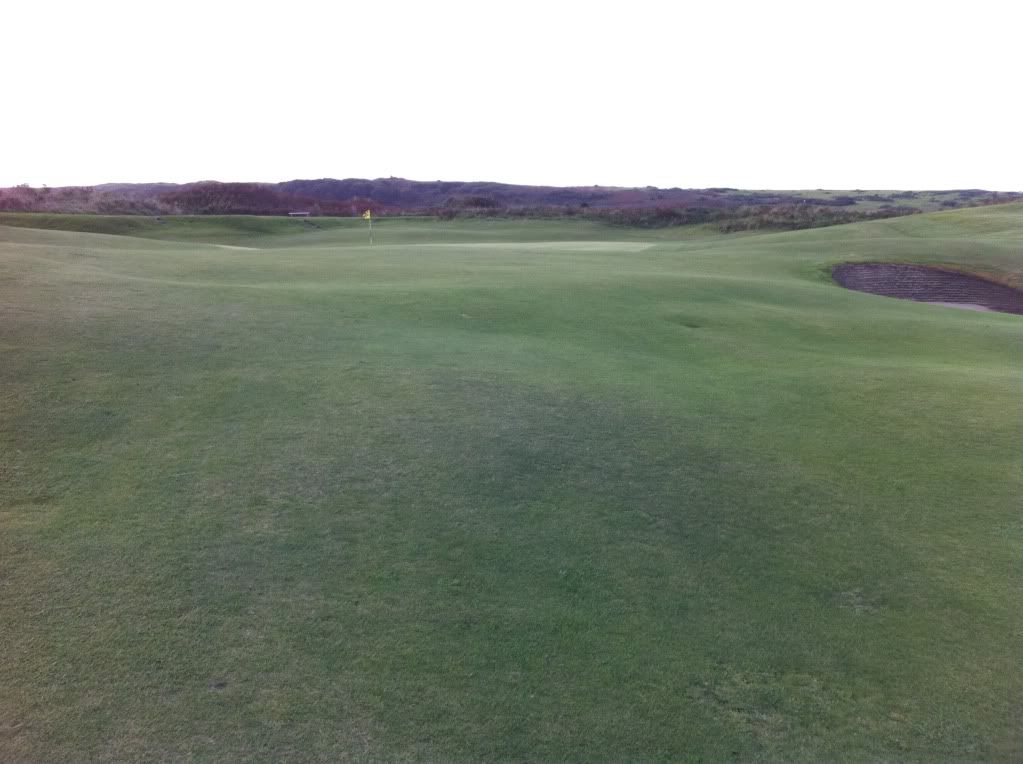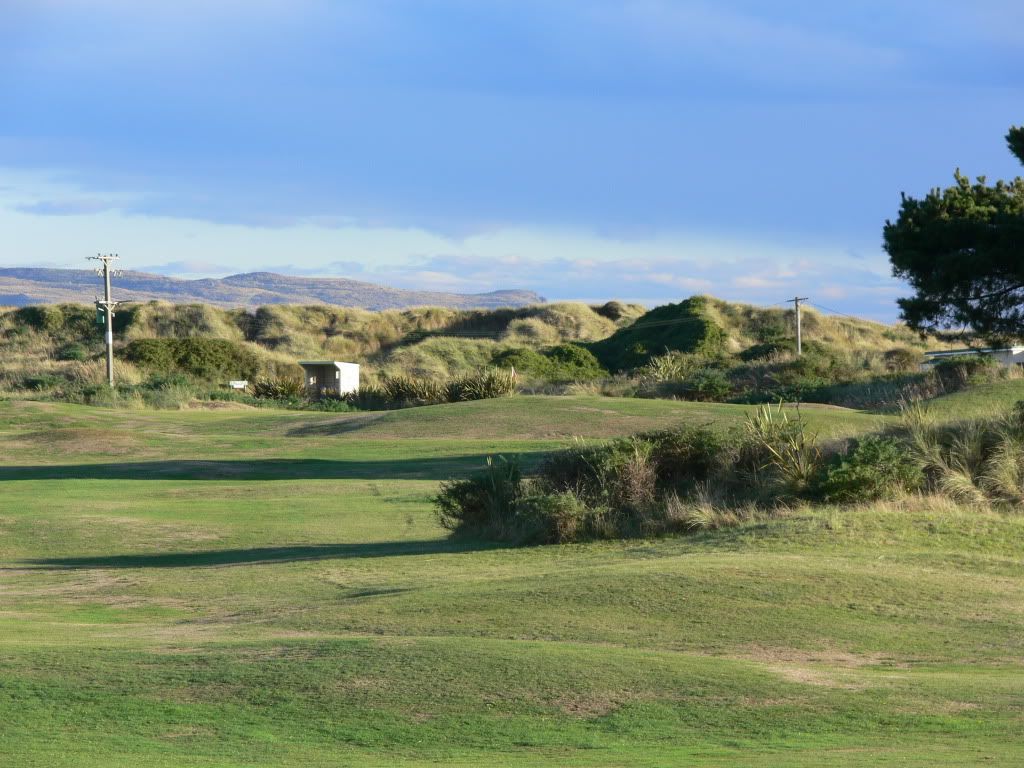Grant,
Thank you for cross-referencing to your interesting previous thread on this subject. Folk herein certainly did post some fine and topical photos in response to your thread. I particularly like the photo Eric posted of Tenby's 11th green, mild and subtle. How far on is the pin? Where should I land my approach shot? Do I land it short and bump-n-roll-n-trickle it on or do I fly it all the way and if so how far? Thought provoking, which IMO is good. Here is the photo reposted.
11th green at Tenby, photo by Eric Smith

Although the semi-blindnes is a bit more severe I liked this too, your photo of the 18th green at Oreti Sands. Reminds me of the 12th green at Cruden Bay, the 6th at Tain and even a bit of the 1st at Royal St Georges.

Slightly blind
full approach shots have been nullified to a certain extent by rangefinders and GPS. However, as these gadgets are generally a little less helpful on
partial shots, a level of blindness or semi-blindness still has a lot of validity when it comes to shorter distance approach shots.
atb